Activation mechanisms of dimeric mechanosensitive OSCA/TMEM63 channels
- PMID: 39209849
- PMCID: PMC11362595
- DOI: 10.1038/s41467-024-51800-0
Activation mechanisms of dimeric mechanosensitive OSCA/TMEM63 channels
Abstract
OSCA/TMEM63 channels, which have transporter-like architectures, are bona fide mechanosensitive (MS) ion channels that sense high-threshold mechanical forces in eukaryotic cells. The activation mechanism of these transporter-like channels is not fully understood. Here we report cryo-EM structures of a dimeric OSCA/TMEM63 pore mutant OSCA1.1-F516A with a sequentially extracellular dilated pore in a detergent environment. These structures suggest that the extracellular pore sequential dilation resembles a flower blooming and couples to a sequential contraction of each monomer subunit towards the dimer interface and subsequent extrusion of the dimer interface lipids. Interestingly, while OSCA1.1-F516A remains non-conducting in the native lipid environment, it can be directly activated by lyso-phosphatidylcholine (Lyso-PC) with reduced single-channel conductance. Structural analysis of OSCA1.1-F516A in lyso-PC-free and lyso-PC-containing lipid nanodiscs indicates that lyso-PC induces intracellular pore dilation by attracting the M6b to upward movement away from the intracellular side thus extending the intracellular pore. Further functional studies indicate that full activation of MS OSCA/TMEM63 dimeric channels by high-threshold mechanical force also involves the opening of both intercellular and extracellular pores. Our results provide the fundamental activation paradigm of the unique transporter-like MS OSCA/TMEM63 channels, which is likely applicable to functional branches of the TMEM63/TMEM16/TMC superfamilies.
© 2024. The Author(s).
Conflict of interest statement
The authors declare no competing interests.
Figures
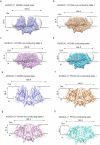
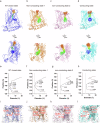
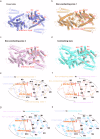
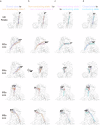
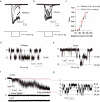


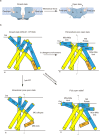
Similar articles
-
A mechanical-coupling mechanism in OSCA/TMEM63 channel mechanosensitivity.Nat Commun. 2023 Jul 4;14(1):3943. doi: 10.1038/s41467-023-39688-8. Nat Commun. 2023. PMID: 37402734 Free PMC article.
-
Mechanical activation opens a lipid-lined pore in OSCA ion channels.Nature. 2024 Apr;628(8009):910-918. doi: 10.1038/s41586-024-07256-9. Epub 2024 Apr 3. Nature. 2024. PMID: 38570680
-
TMEM63 proteins function as monomeric high-threshold mechanosensitive ion channels.Neuron. 2023 Oct 18;111(20):3195-3210.e7. doi: 10.1016/j.neuron.2023.07.006. Epub 2023 Aug 4. Neuron. 2023. PMID: 37543036 Free PMC article.
-
TMEM63 mechanosensitive ion channels: Activation mechanisms, biological functions and human genetic disorders.Biochem Biophys Res Commun. 2023 Nov 26;683:149111. doi: 10.1016/j.bbrc.2023.10.043. Epub 2023 Oct 14. Biochem Biophys Res Commun. 2023. PMID: 37857161 Review.
-
Discoveries in structure and physiology of mechanically activated ion channels.Nature. 2020 Nov;587(7835):567-576. doi: 10.1038/s41586-020-2933-1. Epub 2020 Nov 25. Nature. 2020. PMID: 33239794 Free PMC article. Review.
Cited by
-
Unnatural Amino Acid Photo-Crosslinking Sheds Light on Gating of the Mechanosensitive Ion Channel OSCA1.2.Int J Mol Sci. 2025 Jul 23;26(15):7121. doi: 10.3390/ijms26157121. Int J Mol Sci. 2025. PMID: 40806253 Free PMC article.
-
Nanodiscs remain indispensable for Cryo-EM studies of membrane proteins.Curr Opin Struct Biol. 2025 Jun;92:103042. doi: 10.1016/j.sbi.2025.103042. Epub 2025 Apr 8. Curr Opin Struct Biol. 2025. PMID: 40203538 Review.
-
Groove architecture controls lipid scrambling in simulations of protein and model systems.bioRxiv [Preprint]. 2025 Jul 1:2025.06.27.662058. doi: 10.1101/2025.06.27.662058. bioRxiv. 2025. PMID: 40631228 Free PMC article. Preprint.
-
Two-pore channel regulators - Who is in control?Front Physiol. 2025 Jan 10;15:1534071. doi: 10.3389/fphys.2024.1534071. eCollection 2024. Front Physiol. 2025. PMID: 39867224 Free PMC article. Review.
References
MeSH terms
Substances
LinkOut - more resources
Full Text Sources

